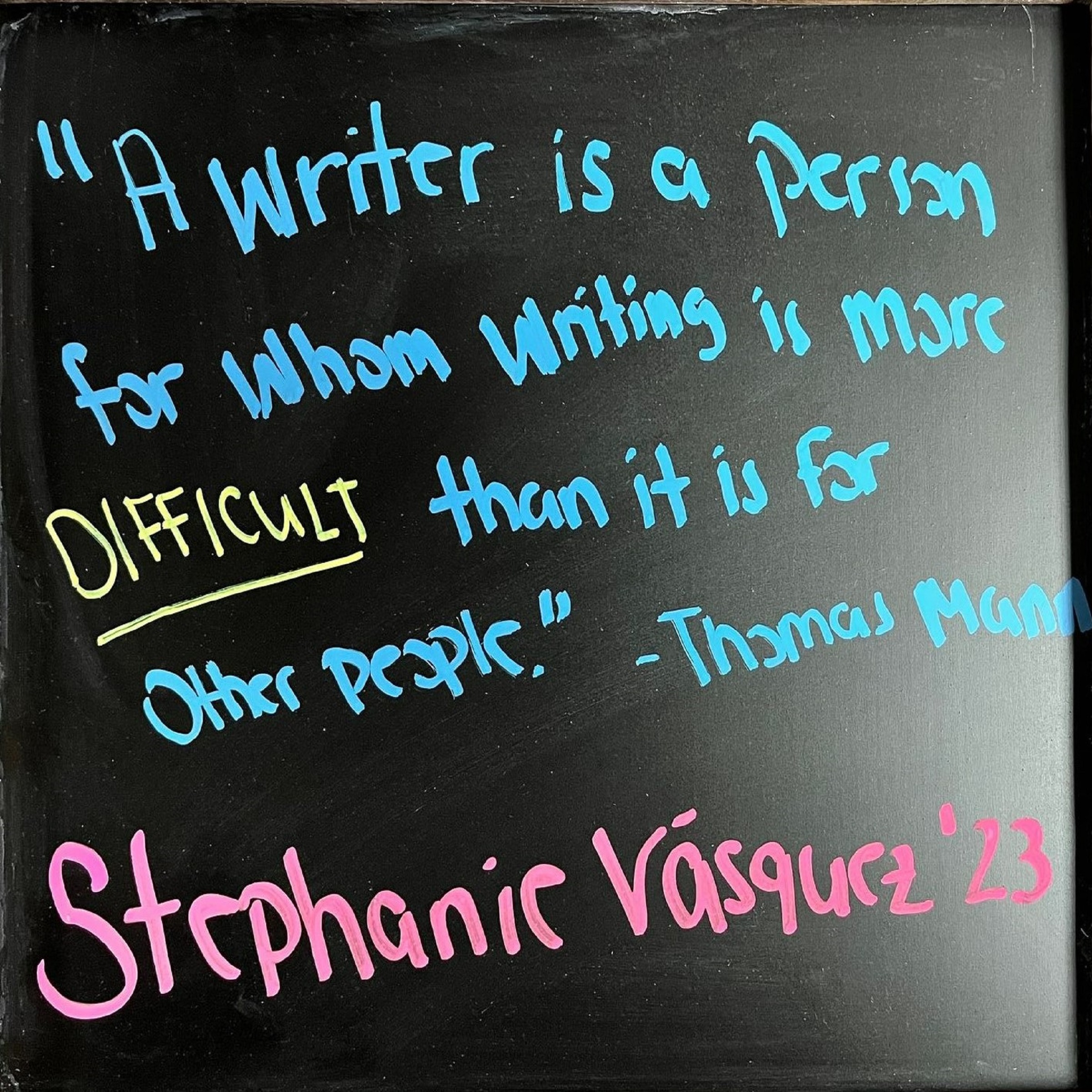- Read the prompt closely to make sure you understand what you need to do within your essay. Generally, in a rhetorical analysis, your instructor wants you to determine why text is or isn’t effective in persuading the audience. However, you may not always be analyzing text—you may instead be asked to look at speech or an even an image. Sometimes the instructor will present you with the item you have to analyze, but other times you may have the opportunity of choosing your own item. Both situations have pros and cons. Is the prompt asking you to do a task like this? If so, it may be a rhetorical analysis. Check out this sample prompt here.
- Read the text closely. Annotate as you read in order to identify parts of the text that you found to be persuasive or that stood out. Those memorable moments are likely rhetorical devices or appeals. Additionally, try to understand the author’s thesis and organizational strategy as you read. Does the presentation of topics work? Are there any images used? Are any stories used? Are there jokes or word-play? Is the word choice crafted in an unusual way?
- Determine the purpose of the text you are evaluating. Because you are examining the effectiveness of a text, you first need to understand its aim in order to know if it is truly fulfilling its purpose. What is the author’s intention? What is the author trying to convey to the audience? Are they informing their audience? Entertaining their audience? Persuading their audience? Is that goal achieved?
- Determine the target audience. Students struggle with this because they often assume that there is no target audience because the text will almost never state “I am trying to convince this specific population about this specific thing.” Rather, this idea is usually implied or hidden in the subtext.
- First, ask yourself, what is this text about and who would be motivated to read this text? For example, is it the text about updated baseball regulations? Then players, coaches, and sports enthusiasts would be interested.
- Where was this text published? What other materials does that source publish? Who generally reads the content that is published? Is it in a scholarly journal? A newspaper? A magazine? The publisher usually indicates something about the target audience.
- When and where was it published? What was happening at this location when the text was published? What issues were potential readers interested in?
- Who is the author? What makes them a credible source on this topic? What else have they written? Who generally reads their writings?
- How much background knowledge does the author present. Are they writing for content experts or a more general audience?
- In the text, are there any references or allusions the author makes? For example, are there references to shows, events, or trends from this generation or another generation?
- Don’t summarize, but analyze. As you start to outline your first draft, it’s important that you do not focus on the content of the text. You should instead be writing about the composing choices that make the text effective. This is difficult for many students, since high school trains us to demonstrate our knowledge by reciting what was presented. Even if you picked the text you are evaluating, you do not need to summarize it to your instructor. A sentence or two of summary in the introduction is typically expected, because it orientates your reader. Generally, you do not use multiple body paragraphs to describe in detail what you read. Instead, you are going to focus how the text was crafted to persuade the target audience.
- In order to prevent your writing from falling into summary, we suggest you use EMPHATIC ORDER, not Chronological Order, so you will NOT have an essay that mirrors the presentation of topics in the original text (For example, “First, the author presented this idea, and then this idea.”). Instead, organize your essay based on frequency or importance of the rhetorical devices used. (One powerful moment was the use of ethos at in the middle of the text . . . Another important element was the way anaphora was used at the end . . .) You can read more about organizational patterns here.
- How do you analyze the text? Look for the following elements in your text. You probably learned these items in class; however, if you did not learn some of these elements in your class, DO NOT use them.
- Rhetorical appeals: Ethos, Pathos, Logos, and Kairos
- Ethos: Are there any places in the text that made you want to trust the author? Does the author demonstrate their credibility or moral code?
- Pathos: Are there any places in the text that caused you to laugh or cringe? Was there any section that made you feel excited or sad?
- Kairos: Are there references to other events that are happening? What made this text relevant when it was published? How is the text “timely”?
- Logos: Are there any numbers, facts, or pieces of expert testimony used? Does the author use any logical reasoning?
- Obviously, logic is a crucial element of an argument. One way to check logic is to look for fallacies or specific flaws in the way logic is used. For example, circular reasoning and proof-by-too-few examples are common fallacies. Here’s some examples of poor logic.
- Obviously, logic is a crucial element of an argument. One way to check logic is to look for fallacies or specific flaws in the way logic is used. For example, circular reasoning and proof-by-too-few examples are common fallacies. Here’s some examples of poor logic.
- Rhetorical appeals: Ethos, Pathos, Logos, and Kairos
- Rhetorical Devices: anaphora, anthesis, hyperbole, pleonasm, oxymoron, etc. Aside from the appeals, are there other rhetorical devices that convey the information in a specific way to elicit a response from the audience? Some of them may look familiar because they are also literary devices.
- Other Rhetorical Strategies or “Slanters”: euphemisms, down-players, and innuendo. These are some specific techniques used to subtly portray information in a positive or negative light to a target audience.
- Have a strong thesis. Here is a general template and sample of a thesis for a rhetorical analysis paper:
- Templates: The author uses ________, ________, and ______ to effectively persuade the audience on this topic.
- Example: Smith uses ethos, pathos, logos in his article “Updated Baseball Rules Strike Out” to persuade his readers that the new regulations in baseball hinder the game-play.
- Use the present tense when describing actions in the piece.
- Use the present tense when describing what the author does.
- Write the author’s name correctly. When you reference the author, write their first and last name the very first time you reference them. Use only the last name when referring to the author later in your paper.
- Use direct quotes from the text. Generally, it’s better to use the quotes than to paraphrase so your reader can see the exact form of rhetoric. Since you are talking about how a text is crafted, the reader needs to see the original text. Here’s some examples of integrating quotes.
- You must provide an explanation of each quote. What is the significance of the quote? What does it show or how does it demonstrate rhetoric?
- Make sure you cite your quotes correctly by using in-text citations. Check out this quick guide. If you have multiple works by the same author, you’ll need to include some extra information.
- Indicate titles correctly. Titles of larger works or containers (like books, plays, anthologies) are italicized. Shorter works within containers (like articles, chapters, poems, short stories) have “quotes” around them.
- Use strong verbs. Let’s avoid “is”, “are”, “has”, “does”, and maybe even move away from “says” and “states”. Check out the list of strong verbs for literary essays here.
- Use your professor’s office hours. Once you have a rough draft, go to your professor’s office hours and see if you’re on the right track. Don’t skip this step. Professors may look for different qualities in papers, and you need to know what they expect from you.
- Beware of the internet and Chat GPT. I know students will browse the internet as a way to get their own ideas flowing. Don’t do it! But, if you can’t resist this temptation, then keep track of each source you read and remember to cite it correctly if you use that idea or a very similar idea anywhere in your paper. Remember, your analysis is your opinion on how devices were used in this text; you don’t need to know what other people think about this text. Instead, learn the rhetorical appeals, devices, and strategies because they will help you approach the text from a critical perspective.
- Take full advantage of peer review or meet with a writing consultant. A reader can help you see the gaps in your argument or indicate where more explanation is needed. They can also help your analysis become more thorough by questioning your claims and adding their own perspectives on the quotes you use as evidence.
- Make sure you are conforming to rules of the format indicated by your instructor. Usually, composition instructors use MLA, but sometimes they use APA. Check out our style guides if you need more information.
Other Tools and Resources
| Student Sample Papers | An Annotated Sample Paper with Essential Components in Footnotes
An Annotated Sample Paper with Essential Elements in Comment Boxes |
| Paired Samples | This website annotates the rhetorical appeals in the original text and then it shows the final essay. |
| Graphic Organizer | A table to keep track of rhetorical elements as you read. |













Leave a Reply